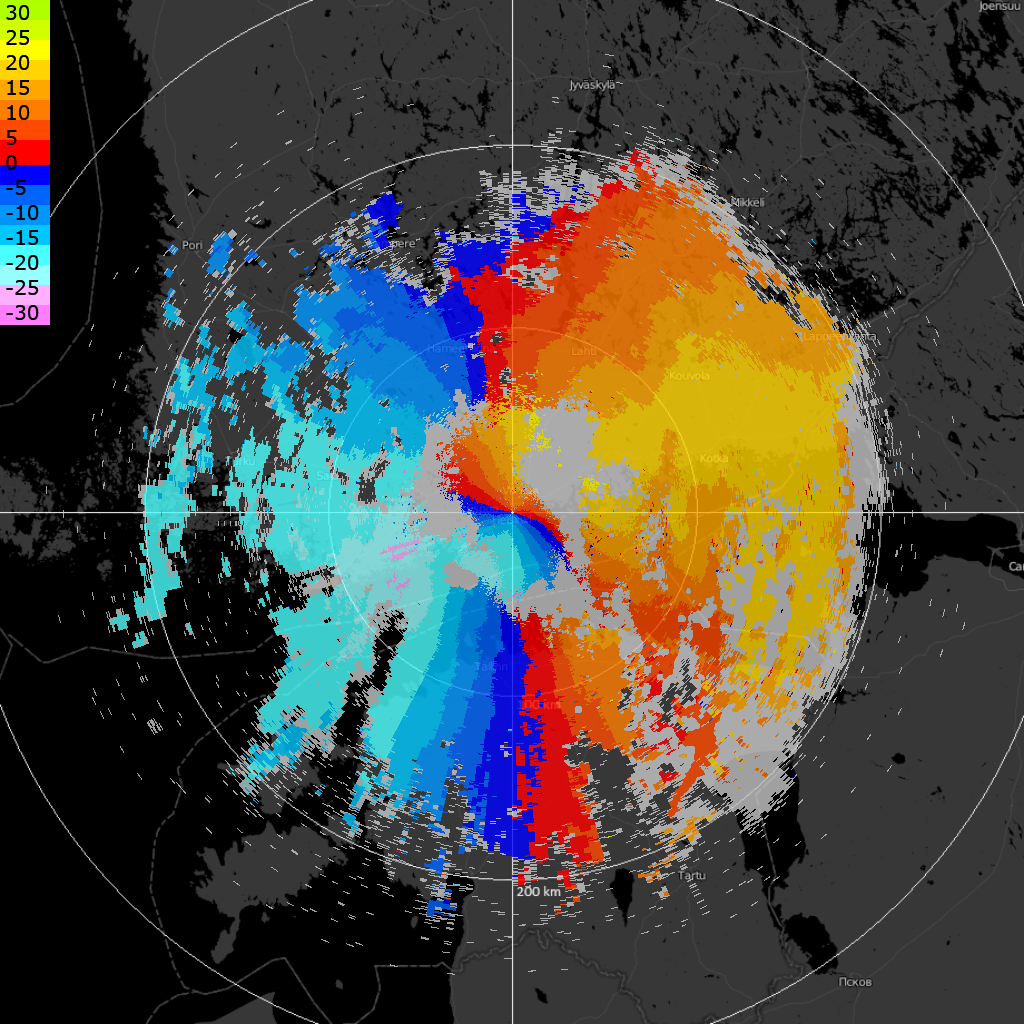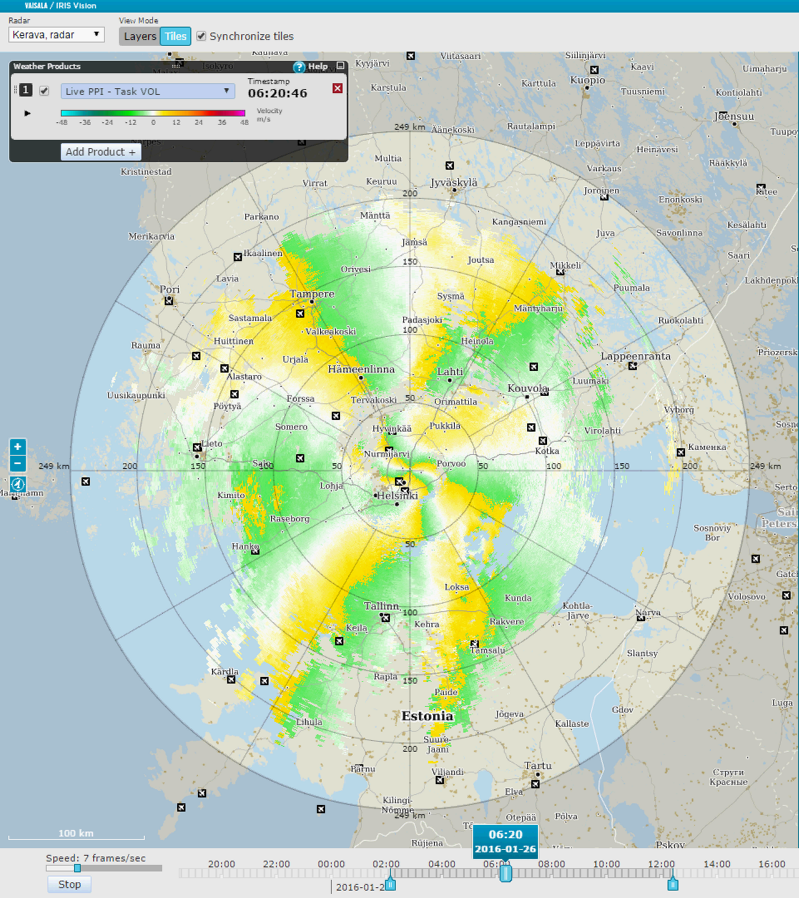Extended Trials Illustrate Operational Robustness of Enhanced C-Band Weather Radar Capabilities

Doppler data from Kerava C-band radar, January 26, 2016, 6:20 local time. Uniform-PRT (LHS) processing illustrating 3x folded Doppler winds. Triple-PRT (RHS) processing for the same time period eliminates velocity folding; providing a uniform wind field.
Vaisala and Eigenor, together with the University of Helsinki, achieved a six-month milestone in their extended operational trials that pave the way for greatly enhanced wind and precipitation measurement tools for forecasters. Installed on the Helsinki University Vaisala C-band radar, the trials demonstrated that forecasters will have access to wind speed measurements, only previously possible with S-band radars, to extended detection ranges; and at cost points closer to that of the less expensive C-Band equipment. The trials consistently demonstrated the robustness of a key feature of the Eigenor-developed method, to effectively reduce clutter at extended ranges, which enables a truly operational and reliable forecasting tool.
According to Jarmo Koistinen, Senior Research Scientist, Earth Observation of the Finnish Meteorological Institute; "Finnish Meteorological Institute has a long experience in weather radar based services. It is at the leading edge of advanced utilization of modern methodologies in radar meteorology. Our recent experience with Eigenor data processing suggests that their new methods can meet our high product quality requirements. The triple-PRT based Doppler velocity folding seems to be reliable and accurate even in very strong winds. The adaptive clutter filtering offers excellent performance, prohibiting e.g. the erroneous impact of clutter filtering to reflectively of rainfall, which is present in conventional systems."
The images below exemplify some of the results of the trial, illustrating the measurement differences between the triple-PRT based Doppler velocity and a traditional uniform-PRT Doppler velocity for a large-scale precipitation event over Southern Finland. True wind speeds are at least three times the maximum winds the radar detects using the traditional uniform-PRT. When using triple-PRT technique, the true wind speeds can be directly and accurately measured to ranges exceeding 250 km, providing the operational forecaster with real-time visualization of the corrected Doppler data for quicker decision-making.

Doppler data from Kerava C-band radar, January 26, 2016, 6:20 local time. Uniform-PRT (LHS) processing illustrating 3x folded Doppler winds. Triple-PRT (RHS) processing for the same time period eliminates velocity folding; providing a uniform wind field.

Add new comment